If you follow me on Instagram then you already know that about a month ago we brought home Reykja and Stimpla, a couple of bred Icelandic sheep with leader genetics. If you don’t follow me on Instagram, big news! We brought home a couple of bred Icelandic sheep! Last spring we welcomed home Bonnie and Clyde, some bottle baby Katahdin lambs. We raised them all year on our new pasture where they fed the soil, improved our grass, and then ultimately fulfilled their greater purpose of feeding our bodies.
All in all, it was a great experience and I am so glad we went that route to get our feet wet raising sheep, rather than jumping into breeding stock. My opinion has not changed at all on the Katahdin breed, and I still maintain they are a fantastic option for people looking to raise sheep as a source of meat. What has changed however, is my view and interest in the world of wool and fiber. This past year I learned how to tan hides, and it became a bit of a passion hobby of mine. I also started knitting, and spinning on my antique spinning wheel. I know not only see sheep as a source of sustainable meat for us, but also as a source of fiber and hides. If I’m going to raise breeding stock, I wanted an animal that could serve a purpose in addition to producing lambs. Katahdin ewes have no wool to shear for felting or spinning, and while I certainly tanned the lambs hides, they pale in comparison to a woolier breed such as Icelandic sheep.
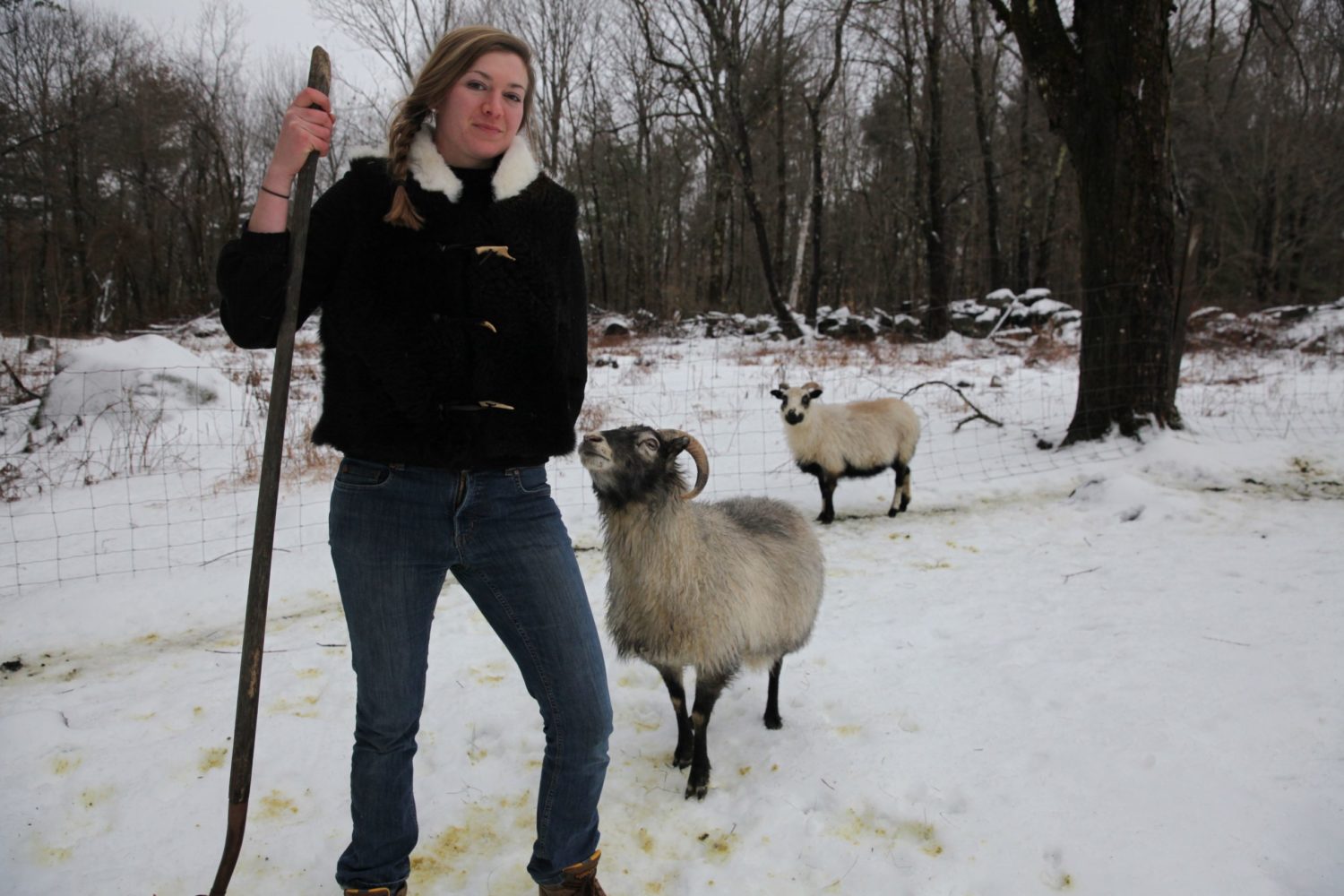
Enter the Icelandics...
Everyone knows what Icelandic Sheep are. While they may not know them by name per se, they are an unmistakable breed that anyone would be like “oh yes, those sheep“. Their wild and majestic nature gives an air of mystery, reminiscent of a time long since passed as if they’ve been plucked from the Viking age and plunged into the 21st century. They appear untouched by time, and unaltered by man.
The Icelandics truly are an “unimproved” breed. While many modern domesticated sheep breeds have been selectively bred and altered specifically for production of wool or meat by people, Icelandics remain largely unaltered. Sure, they evolved some like any species, but as a whole the sheep that remain today are the same ones that kept the Vikings fed and clothed a thousand years ago. While some breeds may be kept and prized for their wool, meat, or milk, Icelandics are a true tri-purpose breed and excel at producing all three.
They are notorious for being tougher than nails, and the ability to withstand the harshest winters. Not only do they do this with minimal shelter needed, but due to their larger rumens they have a more efficient digestive system. I once read that in the harshest of winters in isolation a single sheep could survive for six months on the equivalent of two square bales of hay. This same efficient digestive system that allows them to survive the harshest conditions, also allows lambs to thrive on summer and fall pastures, reaching market weight for butchering in as little as 5-6 months.
As mothers, they tend to lamb easily on their own, and have a strong maternal instinct where they can easily rear triplets without the need for human intervention. Given the fact that we keep pig and goat breeding stock that require a little more fuss, this was a key factor in my decision to go with this breed.
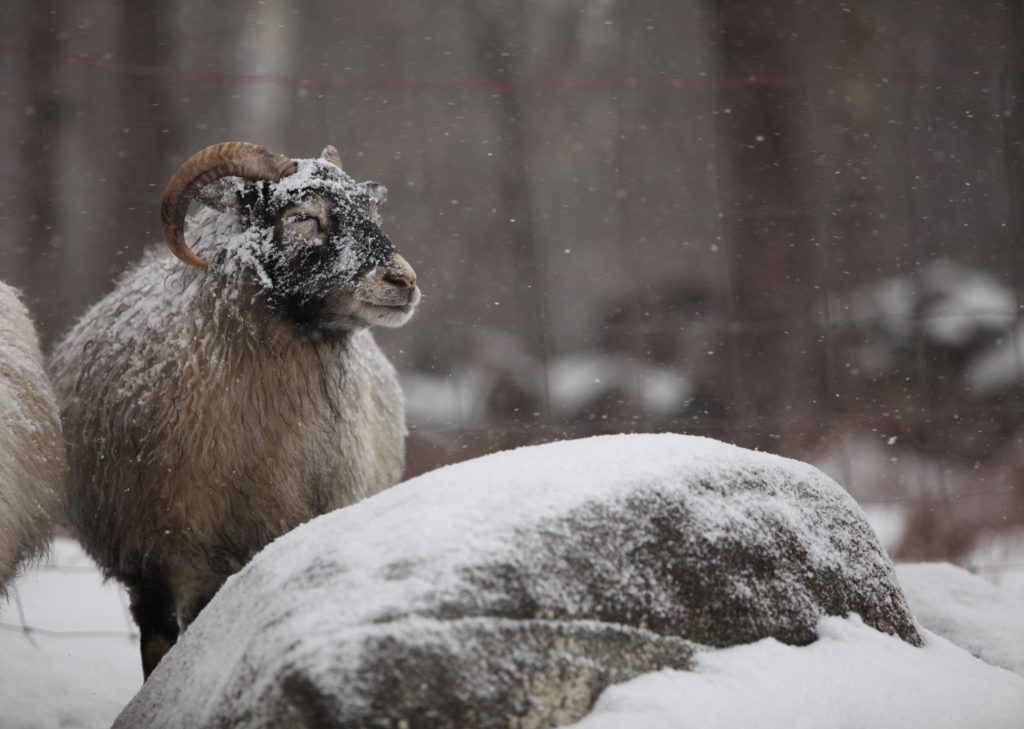
Seasonal Plans
So, we got these sheep…what is our plan now? Like so many things on a homestead, sheep are seasonally driven:
SPRING
In April of this year they are both due to lamb. This will be Reykja’s second lambing, and Stimpla’s first. Between the two we can anticipate anywhere from 3-5 lambs. Twins and triplets are common in seasoned mothers, while singles or smaller twins are typically seen in first timers. We want to retain three lambs to raise for our consumption, and any surplus will be sold when weaned.
Spring also brings shearing. Unlike other domesticated breeds that are dependent upon people for shearing, Icelandic sheep have a natural break in the growth of their wool. If left to their own devises they will actually shed their winter coat. This is however a valuable resource that people recognize would be wasted, so shearing them during this natural break in the spring is common practice. Spring fleece is typically the less desirable (as opposed to fall) because it tends to be dirtier and more matted. This is of course very dependent on their living conditions and care. Regardless, I have many felting projects in mind I plan to utilize Reykja and Stimpla’s fleece for.
SUMMER
Summer is all about growing fat lambs. They will be given the best start possible being raised by their mothers and naturally weaned. They will be rotationally grazed around our property throughout the whole summer. While improving our soil and pasture grass quality, they will also munch down and clear some of the lesser quality scrub brush. Maintenance primarily consists of moving fence, filling water buckets, and just enjoying the pastoral scenery they create.
FALL
Fall is where the harder work comes in. Once the growth of pasture grass starts to decline with cooler temperatures, the time will come to harvest the lambs to fill the freezers. This is something that like before, we will do at home and their hides will be brain tanned by me to create throws, rugs, etc.
Reykja and Stimpla will also need to be sheared again in preparation for winter, where their wool will be used for felting projects or sent off to a mill to be cleaned, carded, and either turn into roving for my own spinning, or commercially spun.
WINTER
In early winter after the lamb’s meat and ewe’s fleece’s have been harvested, we start preparing for the process to start all over again. Icelandics are seasonal breeders, and April-May seems like it will be ideal time for us for lambing. With a five month gestation, that means we will want to put a ram (whether he be rented or our own) in with the ewes by November at the earliest.
Then, like with the other livestock we keep, winter is the time to focus on our expectant mothers and making sure we are doing everything we can to ensure as healthy of a pregnancy and delivery as possible.
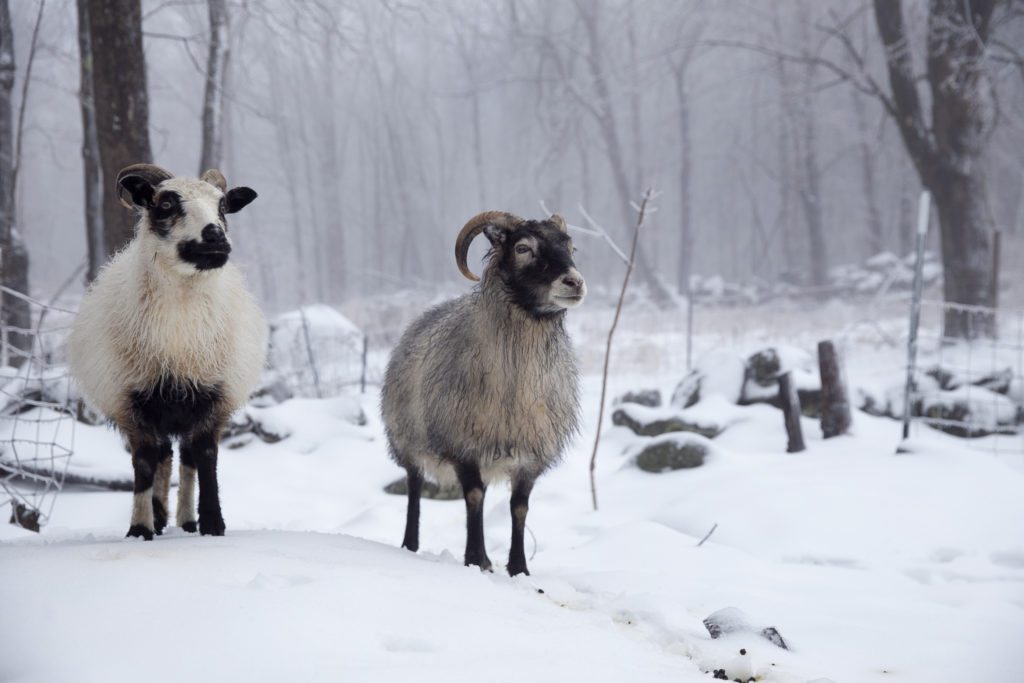
The Meat
While the hides to tan and fleece for felting and yarn are the sprinkles and cherry on top of the sundae, for us the priority is meat. Keeping our own breeding stock for lambs, much like farrowing our own pigs gives us a sustainable source of meat to replenish our freezers year after year.
Icelandic lamb is renowned for its tender, fine grained, mild flavored meat. While they visually may look inferior in stature compared to a larger Suffolk and Dorper, their compact bodies should not be discounted. They may appear smaller, but they produce a premium quality and meaty carcass. Yes, you may have to raise more lambs to get a larger harvest, but they also require less acreage and less time to grow as opposed to cattle. Depending on pasture quality and how many bone in/boneless cuts you get, a single lamb can produce 30-40 pounds of premium meat to put in the freezer in a matter of a few months.
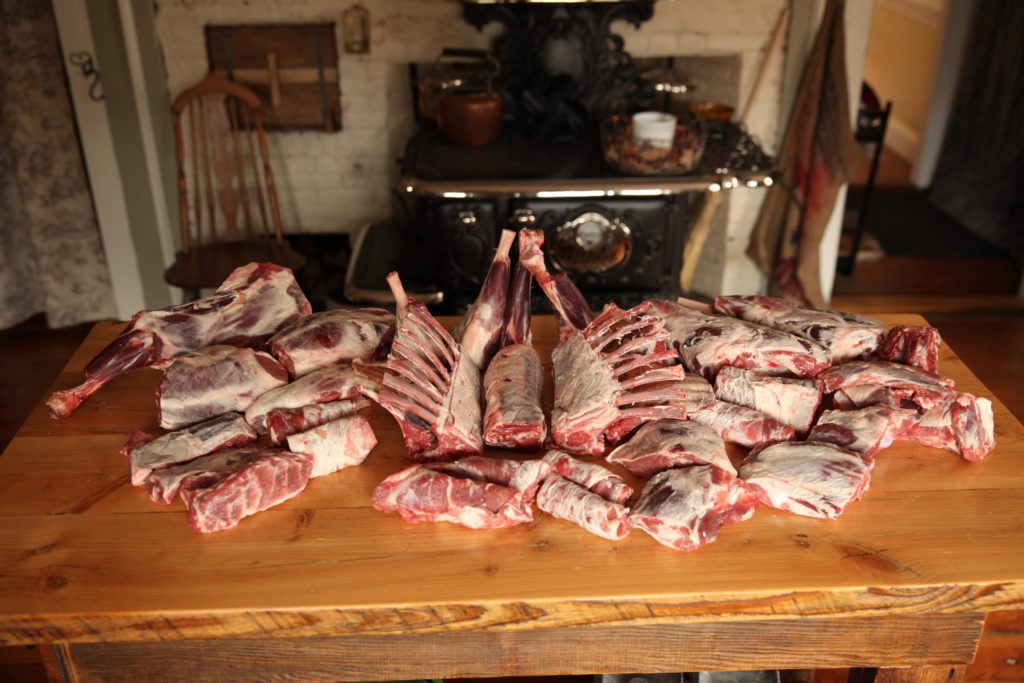
Just like with any animal we raise, I have no doubt we will learn, evolve, and change our methods. As our needs as well as the animals’ change, we evolve and adapt. Regardless of how we change or grow, I have no doubt we made the right decision in choosing to raise Icelandic sheep.
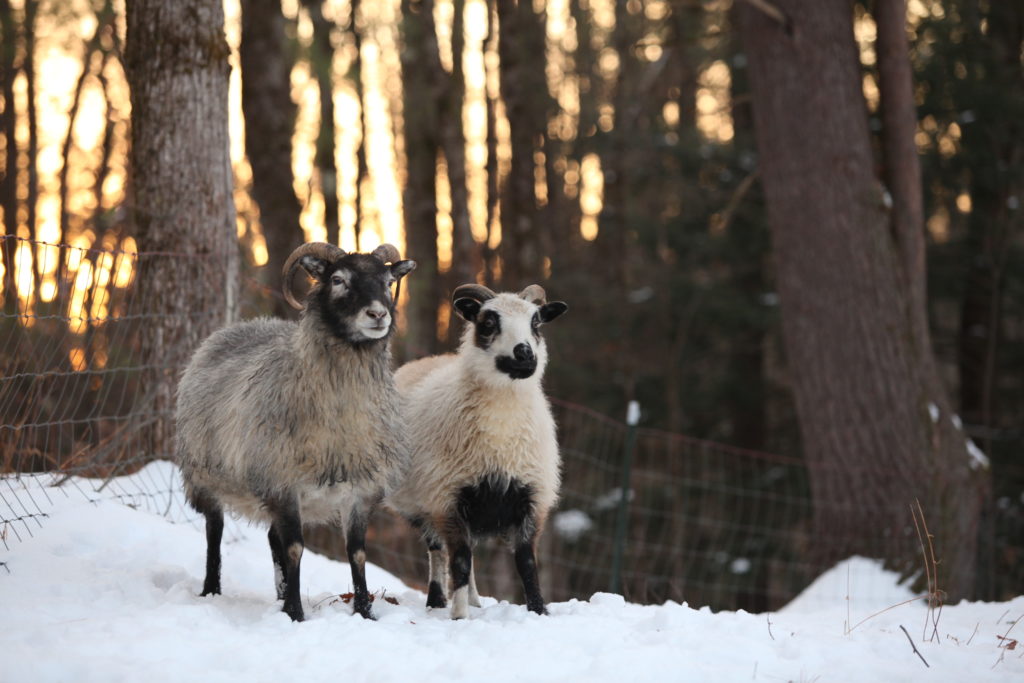
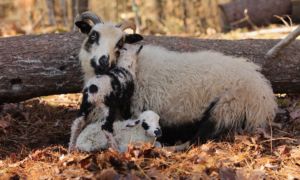
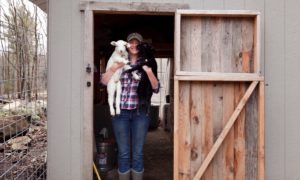
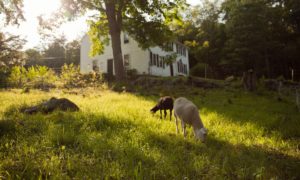
Pingback: Building a Lambing Jug - The Modern Day Settler
Pingback: Stimpla's First (Assisted) Lambing - The Modern Day Settler